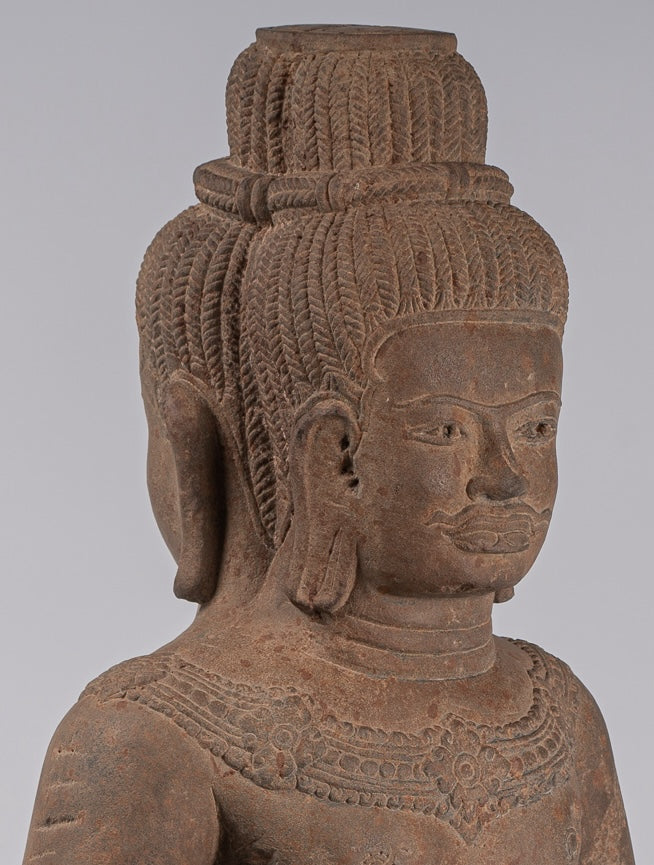
Vrata: The Sacred Practice of Devotional Observances in Hinduism
In the tapestry of Hindu spirituality, vrata stands as a sacred practice of devotion and self-discipline that holds profound significance for millions of practitioners worldwide. Rooted in ancient tradition and enriched by centuries of cultural heritage, vrata encompasses a wide range of religious observances, rituals, and vows undertaken by devotees to seek the blessings of the divine and cultivate spiritual virtues.
In this comprehensive guide, we delve into the rich history, symbolism, types, and spiritual significance of the Hindu practice of vrata.
Understanding the Essence of Vrata
Vrata, derived from the Sanskrit word "vrata," meaning vow or observance, refers to the spiritual discipline of adhering to specific rituals, vows, or restrictions for a predetermined period with unwavering devotion and sincerity. Vrata is not merely a set of rules or regulations; it is a sacred covenant between the devotee and the divine, symbolizing a commitment to spiritual growth, moral integrity, and self-transformation.
The Types of Vrata
Vrata encompasses a diverse array of observances and practices, each with its unique rituals, significance, and duration. Some of the most common types of vrata include:
- Ekadashi Vrata: Devotees fast on the eleventh day of the lunar fortnight (Ekadashi) to seek purification of body, mind, and soul, and to express devotion to Lord Vishnu.
- Satyanarayan Vrata: A ritualistic worship of Lord Vishnu in his form as Satyanarayan, this vrata is observed by families to invoke divine blessings for prosperity, happiness, and spiritual fulfillment.
- Navratri Vrata: Devotees observe a nine-day fast and worship the divine feminine in her various forms during the auspicious festival of Navratri, seeking protection, prosperity, and divine grace.
- Karthika Vrata: Devotees undertake various spiritual practices, including fasting, prayers, and visits to sacred sites, during the holy month of Karthika to seek spiritual purification and divine blessings.
- Sankashti Chaturthi Vrata: Devotees observe a fast and perform rituals on the fourth day of the lunar month (Chaturthi) to seek the blessings of Lord Ganesha for the removal of obstacles and fulfillment of desires.
These are just a few examples of the myriad vrata observances practiced by Hindus across different regions and communities, each with its unique significance and customs.
The Spiritual Significance of Vrata
Vrata holds deep spiritual significance for practitioners of Hinduism, serving as a means of cultivating virtues such as self-discipline, devotion, and humility. By undertaking vrata observances with sincerity and devotion, devotees seek to purify their hearts and minds, strengthen their spiritual connection with the divine, and align their lives with the principles of dharma (righteousness) and karma (action).
Benefits and Blessings of Vrata
The practice of vrata is believed to bestow numerous blessings and benefits upon devotees, including:
- Spiritual purification and inner transformation
- Divine protection and guidance on the spiritual path
- Fulfillment of desires and removal of obstacles
- Peace, prosperity, and well-being for oneself and loved ones
- Merit and spiritual merit (punya) accumulated through virtuous deeds
Conclusion: Embracing the Sacred Practice of Vrata
As the practice of vrata continues to thrive in Hindu culture and tradition, it serves as a timeless reminder of the power of devotion, discipline, and faith in the journey of spiritual awakening.
Whether observed through fasting, prayers, rituals, or acts of charity, vrata offers devotees a sacred opportunity to deepen their connection with the divine, purify their hearts, and lead a life of virtue and righteousness.
May the practice of vrata inspire us all to walk the path of devotion, integrity, and selflessness, and to realize the eternal presence of the divine within and around us.


